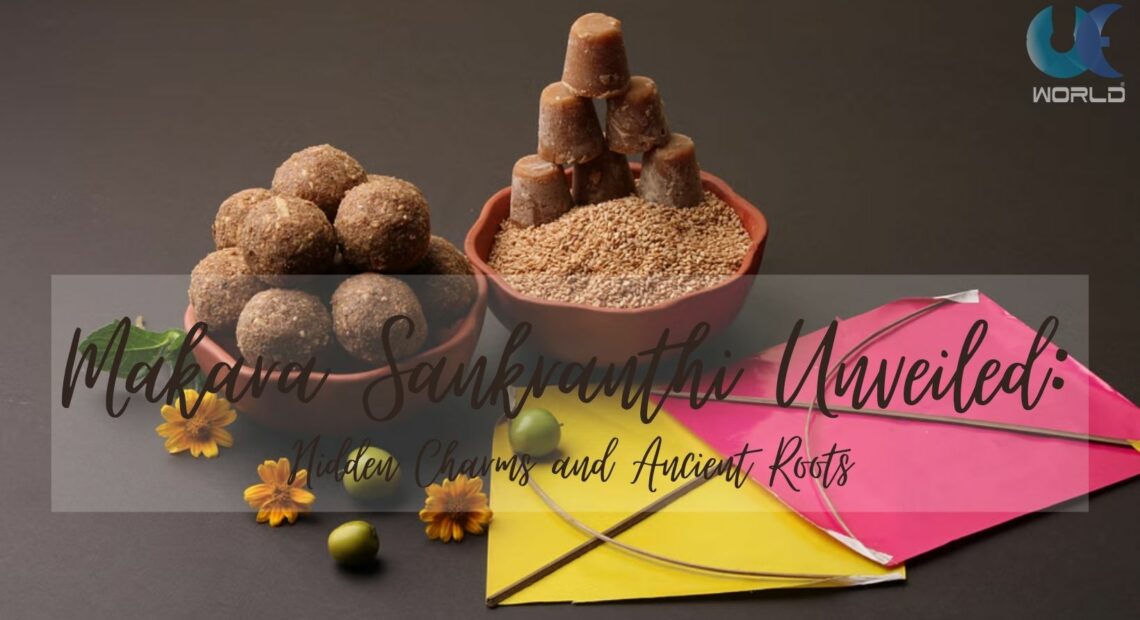Unveiling the Veiled: Makara Sankranthi’s Unknown Charms

In the vibrant tapestry of Indian festivals, Makara Sankranthi stands out like a resplendent jewel, marking the transition of the sun into the zodiac sign of Capricorn. Beyond the colorful kites soaring high in the sky and the sweet aroma of sesame seeds and jaggery, lie lesser-known facets that add a touch of mystique to this celestial celebration.
Astronomical Precision:
Makara Sankranthi is not just a date on the calendar; it’s an astronomical phenomenon. The festival precisely aligns with the sun’s journey into the Northern Hemisphere, bringing longer days and the promise of warmer weather. Celebrated on the 14th or 15th of January, depending on the solar calendar, this festival encapsulates the scientific connection between Earth and the Sun.
Harvest of the Heart:
While the festival is synonymous with kite-flying and indulging in sweet delicacies, its roots are deeply embedded in agriculture. Makara Sankranthi heralds the end of the winter harvest season and the beginning of longer days. It’s a time when farmers express gratitude for the bountiful crops and pray for a prosperous future.
The South Indian Pongal Feast:
Down south, especially in Tamil Nadu, Makara Sankranthi transforms into Pongal, a four-day harvest festival. The highlight of the celebration is the preparation of ‘Pongal,’ a traditional dish made with newly harvested rice, lentils, jaggery, and ghee. The dish is cooked in an earthen pot, and as it boils over, symbolizing prosperity and abundance, a cry of “Pongalo Pongal” reverberates through households.
The Secret of Sesame Seeds:
Among the myriad of sweets prepared during Makara Sankranthi, one ingredient steals the spotlight – sesame seeds. These tiny seeds are believed to have a warming effect on the body, making them the ideal snack during the winter season. Additionally, sesame seeds hold cultural significance, symbolizing the unity and strength of a family, as each seed tightly binds to the other.
The Underrated Tilgul Tradition:
In Maharashtra, Makara Sankranthi is celebrated with a unique ritual called “Tilgul.” Families exchange sweet sesame and jaggery treats while saying, “Tilgul ghya, god god bola” (Accept this tilgul and speak sweetly). This age-old custom not only sweetens the taste buds but also emphasizes the importance of sweet speech in fostering strong relationships.
Historical Roots in Bhishma Pitamah:
Legend has it that the great warrior Bhishma Pitamah, from the epic Mahabharata, waited on his deathbed for the auspicious sun transition of Makara Sankranthi before breathing his last. This historical connection adds a layer of reverence to the festival, making it more than just a seasonal celebration.
In the kaleidoscope of festivities that paint the canvas of India, Makara Sankranthi emerges not just as a festival but as a bridge connecting tradition, science, and the agricultural heartbeat of the nation. As kites dance in the azure sky and the aroma of sesame-infused delights fills the air, let’s pause to appreciate the unknown charms that make Makara Sankranthi a tapestry woven with threads of culture, history, and celestial grace.
Pic Courtesy: google/ images are subject to copyright













